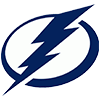Just...start...the...season.
Anyone else sick of billionaires and millionaires haggling over financial issues that continue to threaten the viability of ANY baseball in 2020?
I know I am.
Players have already agreed to prorated salaries, meaning basically that if they were due $1 million for 162 games, they would get about half of that for 82 games. Seems reasonable, no? To the owners facing putting on a product without fans, they don't feel that 2020 revenues will support paying that level of salaries, hence the proposal to share revenues 50/50. I sort of get that as well, but considering the players aren't billionaires and that they've already agreed to proration, it's the owners' turn to step up and give us the game we love. In looking into the latest proposal, the highest earners are proposed to get the largest cuts. For example, Gerrit Cole's $36 million full-season salary would not just be prorated to around $18 million for a half-season, but further cut to "just" $8 million, a 78 percent total cut instead of 50 percent. Okay, it's still $8 million (I'd take that), but when the owners are multibillionaires, I can see the players' side.
Anyway, on to this week's topic. I wanted to dive into some undervalued pitchers this week, and in trying to come up with such a list, I'm focusing on a couple of my favorite metrics:
ERA vs. FIP – Which pitchers' underlying metrics give us confidence that they can improve significantly on their prior-year
Just...start...the...season.
Anyone else sick of billionaires and millionaires haggling over financial issues that continue to threaten the viability of ANY baseball in 2020?
I know I am.
Players have already agreed to prorated salaries, meaning basically that if they were due $1 million for 162 games, they would get about half of that for 82 games. Seems reasonable, no? To the owners facing putting on a product without fans, they don't feel that 2020 revenues will support paying that level of salaries, hence the proposal to share revenues 50/50. I sort of get that as well, but considering the players aren't billionaires and that they've already agreed to proration, it's the owners' turn to step up and give us the game we love. In looking into the latest proposal, the highest earners are proposed to get the largest cuts. For example, Gerrit Cole's $36 million full-season salary would not just be prorated to around $18 million for a half-season, but further cut to "just" $8 million, a 78 percent total cut instead of 50 percent. Okay, it's still $8 million (I'd take that), but when the owners are multibillionaires, I can see the players' side.
Anyway, on to this week's topic. I wanted to dive into some undervalued pitchers this week, and in trying to come up with such a list, I'm focusing on a couple of my favorite metrics:
ERA vs. FIP – Which pitchers' underlying metrics give us confidence that they can improve significantly on their prior-year ERA? We'll look at a handful of guys who have an ERA a half run or more higher than their FIP (expected ERA based on strikeouts, walks and home runs).
Swinging strike rate vs. ERA – Which pitchers put up an excellent swinging strike rate (percentage of pitches that results in swings and misses) but a subpar ERA?
ERA vs. FIP
Jose Quintana, Cubs (ERA – 4.86, FIP – 3.80)
Quintana is in the last year of his contract, while Eloy Jimenez and Dylan Cease are just getting their careers going. What did the Cubs get out of this deal? A guy who at the time looked to be above league average on a friendly contract for two premium prospects and a couple other guys. It looked at least semi-defensible at the time, as the Cubs were looking to make a run at back-to-back World Series titles. What have they received from Quintana? Pretty close to league average pitching with bonus points for durability. As a Cub, Quintana has a 4.23 ERA in 78 starts, but at least his 2019 numbers start to look a bit better as we dig deeper. Quintana's K percentage peaked in 2017 at 26.2 percent, but it was still a reasonable 20.4 percent last year while he cut his year-over-year BB percentage from 9.2 to 6.2. Even in a home run happy year, Quintana's HR/9 was a reasonable 1.05. and he maintained a solid 44.5 GB percentage. Velocity-wise, Quintana's 91.4 mph average fastball was slightly down from 2018's 91.6, but he's never been a high-velocity guy. All in all, the ingredients are there for a sub-4.00 ERA in 2020.
Rick Porcello, Mets (ERA – 5.52, FIP – 4.76)
Thanks to the Noah Syndergaard Tommy John surgery, Porcello is a lock for the rotation despite coming off a pretty ugly season with the Red Sox. Even the 4.76 FIP is discouraging as his K percentage plummeted from 23.5 in 2018 to 18.6 last year. Like a lot of pitchers, Porcello's HR/9 was elevated (1.6), and though it should in theory drop with a move to the NL, he will still be dealing with the DH and may be pitching most of his games in very warm environments, making him a continued risk. Porcello's velocity held up last year, though at 90.5 mph, his fastball isn't blowing guys away. He's still just 31 and four years removed from winning the 2016 AL Cy Young award, though it's tough to be all that optimistic about him in 2020.
German Marquez, Rockies (ERA – 4.76, FIP – 4.06)
Marquez's best season remains 2018, but 2019 wasn't as bad as it looks either. His K percentage did drop from 28.2 to 24.3, but even the latter mark still has him just above a strikeout per inning. He also dropped his BB percentage from 7.0 to 4.9 and improved his GB percentage from 47.3 to 49. It seems unlikely he'll be pitching any 2020 games in Colorado, and after posting a 6.26 ERA there last year (3.67 on the road), that can't be a bad thing, even if he winds up pitching 100 percent of his games in the desert in Arizona. I see Marquez as a guy, at just 25 years of age, who can take a big step forward this year.
Noah Syndergaard, Mets (ERA – 4.28, FIP – 3.60)
Not really much to say here, as Syndergaard is obviously not pitching in 2020. I guess the Mets should have traded him after all.
Joe Musgrove, Pirates (ERA – 4.44, FIP – 3.82)
I had Musgrove as a breakout candidate last year, and while he did pitch a career-high 170.1 innings, the results just weren't there. His 8.3 K/9 and 2.1 BB/9 were both solid, and in this environment, a 1.1 HR/9 really isn't that bad. In the few times I saw him pitch, it just seemed that he wasn't able to put guys away, particularly with runners on base. With the bases empty, hitters hit just .228 against him, but with runners on, that spiked to .294. If he can improve the latter and figure out how to pitch against the Cardinals (12.08 ERA in three starts last year), perhaps that breakout comes. The sore shoulder he experienced this spring is worth monitoring as we (hopefully) ramp back up in June.
Lance Lynn, Rangers (ERA – 3.67, FIP – 3.13)
The Rangers could not have hoped for more from Lynn in the first year of his three-year deal. The right-hander continued to be one of the more durable pitchers in the league, making 33 starts and pitching a career-high 208.1 innings and going 16-11 with a 2.67 ERA and 1.22 WHIP with a whopping 246 strikeouts, a mark that ranked seventh in baseball, three strikeouts more than Max Scherzer (albeit in 36 more innings). Lynn turned 33 earlier this month, so while 2014 and 2019 may ultimately be the best two seasons of his career, he should continue to be a reliable option in 2020.
Swinging strike rate vs. ERA
Note: League average swinging strike rate in 2019 was 11.1 percent. Criteria here are all qualified pitchers with an above-average swinging strike rate and an ERA above 4.00.
Matthew Boyd, Tigers (Swings% - 14.1%, ERA – 4.56)
Boyd peaked 12 starts into last season, opening with a 2.85 ERA, 10.9 K/9 and 1.9 BB/9. The rest of the way? A 5.67 ERA, but still with solid ratios – 12.0 K/9 and 2.8 BB/9. In those 20 starts, however, Boyd carried an astronomical 2.6 HR/9, so while he continued to miss plenty of bats, when he did pitch too much in the strike zone, hitters took advantage. When a pitcher has a 92-mph average fastball, pitching up in the zone too often can lead to disaster. He'll need to make some adjustments with his pitch mix and approach to avoid the home run barrage from continuing. Still, it's easy to look at those strikeouts and walk rates and dream.
Robbie Ray, Diamondbacks (SwingStr% - 13.6%, ERA – 4.34)
Ray managed to make 33 starts last year and the results were decidedly mixed. His 31.5 K percentage was elite, but an 11.2 BB percentage (4.3 BB/9) meant that Ray pitching much beyond the sixth inning was rare. In fact, in just one of his 33 starts did Ray log seven innings. The 235 strikeouts were a career-high and represented the third time in four seasons that Ray reached that plateau, but a 4.1 career BB/9 has prevented Ray from taking a step forward. Clayton Kershaw had a 4.2 BB/9 through the first three seasons of his career and a 1.8 mark since. Whether Ray can come anywhere close to that remains to be seen, but if he can even get his BB percentage more in the 8 percent range, that would certainly raise his stock.
German Marquez, Rockies (SwingStr% - 12.7%, ERA – 4.76)
We already talked about Marquez above. This is just more ammo for Marquez truthers.
Noah Syndergaard, Mets (SwingStr% - 12.5%, ERA – 4.28)
See above. Nothing to see here for 2020.
Trevor Bauer, Reds (SwingStr% - 12.2%, ERA – 4.48)
Bauer is still young enough to have another 2018-type season, but at this point, that year (2.21 ERA) is looking like the outlier. In his other 941 2/3 career innings, Bauer's ERA sits at 4.39. We obviously can't completely ignore 2018, and at 29, Bauer should have plenty left in the tank, but what if last year's 4.48 ERA is his baseline these days? In 10 starts after coming over from the Indians to the Reds, Bauer posted a 6.39 ERA. You would have thought the move to the NL would help, but no such luck for the Reds. Bauer's 27.8 K percentage was excellent, and though his BB percentage regressed a bit to 9 percent, that's still not bad. Worth noting (and I'm sure he has) is that his GB percentage went south last year, dropping from 2018's 44.5 to 37.6, leading to a 1.4 HR/9. An ERA in the high 3s seems very possible for 2020, but a return anywhere near 2018 seems unlikely.
Joe Musgrove, Pirates (SwingStr% - 12.0%, ERA – 4.44)
See write-up above. This means 2020 is his year, right?
Max Fried, Braves (SwingStr% - 11.5%, ERA – 4.02)
Fried probably only got a roster spot out of spring due to other Atlanta injuries, but he certainly took advantage. In 30 starts and three relief outings, Fried tossed 165.2 innings of 4.02 ERA ball, including a 173:47 K:BB, and for a fantasy bonus, 17 wins. Fried's ratios were solid, including a 24.6 K percentage and 6.7 BB percentage. He generated a good number of ground balls with a 53.6 GB percentage, allowing HR/9 despite an elevated 20.2 percent HR/FB rate. Fried looks to be locked in as the team's No. 2 starter behind Mike Soroka, so he should have plenty of job security (and upside) in 2020.

































